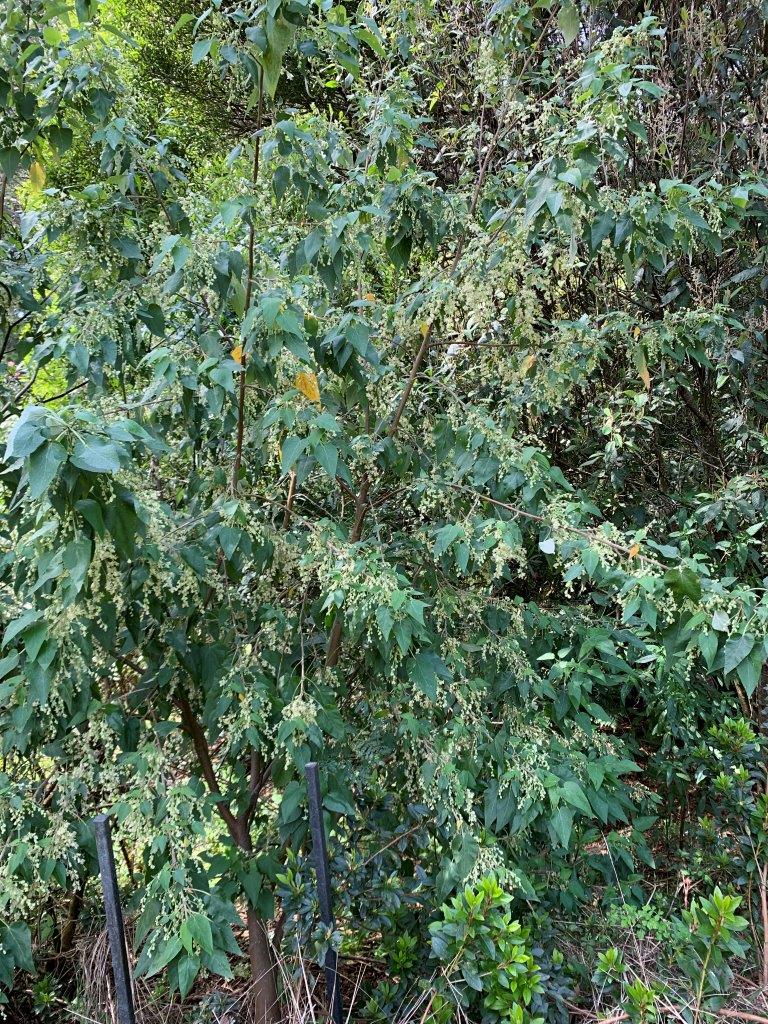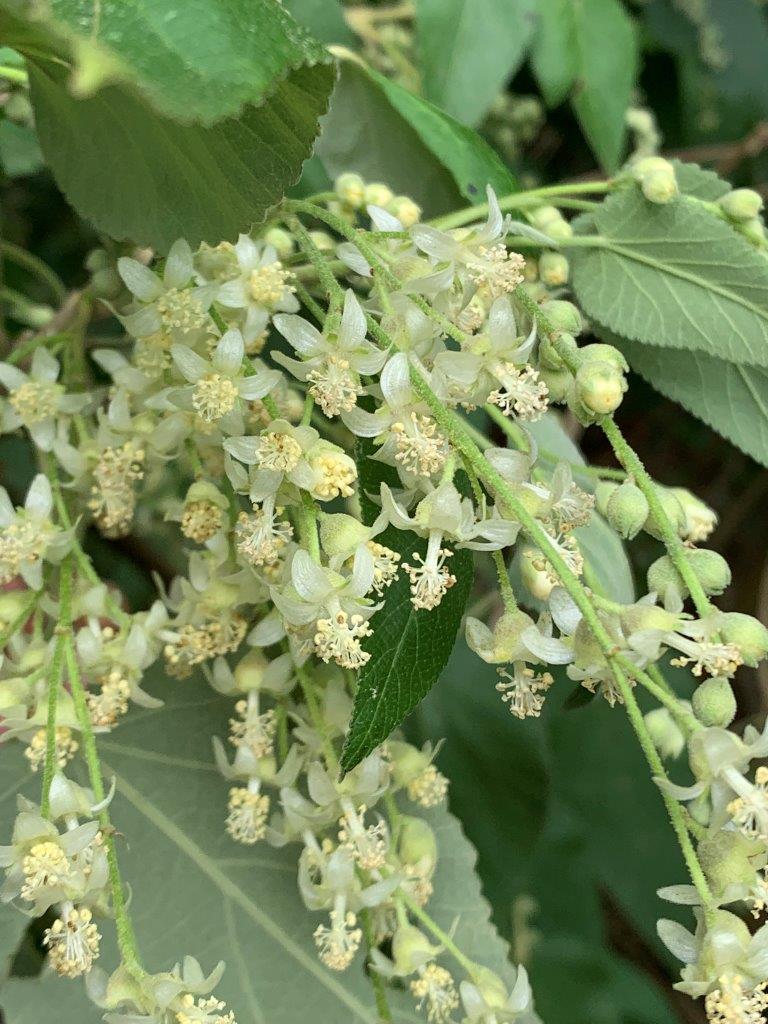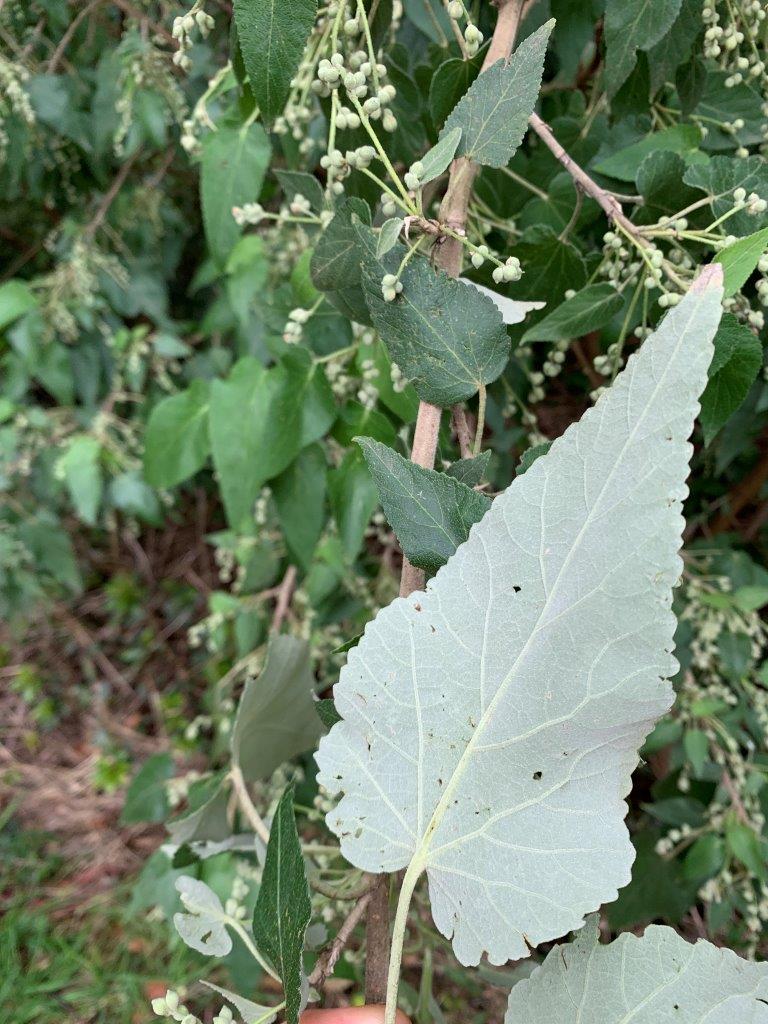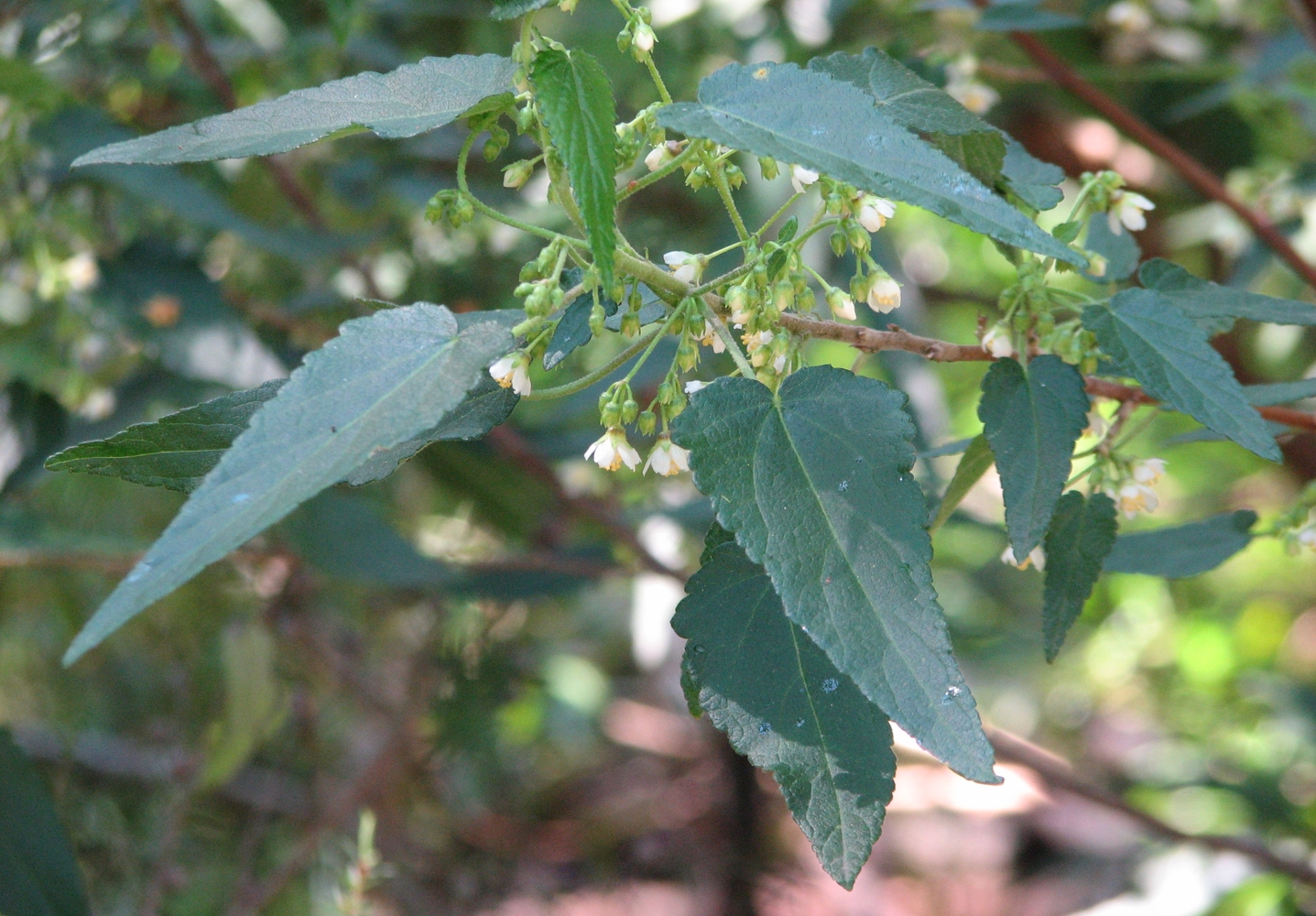Gynatrix
Sponsor
Kindly sponsored by
a member of the International Dendrology Society
Credits
Julian Sutton (2022)
Recommended citation
Sutton, J. (2022), 'Gynatrix' from the website Trees and Shrubs Online (treesandshrubsonline.
Family
- Malvaceae
Two species of evergreen, dioecious, large shrubs or small trees endemic to southeastern Australia, with small, creamy white flowers (Walsh & Entwisle 1997; Curtis & Morris 1975).
Gynatrix belongs to Tribe Malveae of the Malvaceae, and is a rare example of a woody genus in a group dominated by herbs and subshrubs (e.g. Malva) (Stevens 2021). It is closely related to the New Zealand genus Plagianthus and the Tasmanian Asterotrichion – they are collectively known as the Plagianthus alliance, and have sometimes all been included in Plagianthus. Gynatrix differs from these related genera in fruit structure: the endocarp (the inner wall of each mericarp) becomes crustaceous, leading to the mericarps splitting away from the persistent axis.
The Plagianthus alliance appears to be sister to the important New Zealand genus Hoheria. In turn, this group including Hoheria is sister to Lawrencia, a genus of Australian shrubs and subshrubs (Wagstaff & Tate 2011). The implication is that either the ancestors of Plagianthus and Hoheria migrated separately from Australia to New Zealand, or their common ancestor migrated to New Zealand, followed by a reverse migration by an ancestor of Gynatrix and Asterotrichion.
For many years only one species was known, G. pulchella, which has quite a wide distribution in southeastern Australia. A second, rather similar species, G. macrophylla N.G.Walsh, was described from Victoria in 1996. We briefly describe G. pulchella, which has occasionally been grown in our area, mentioning how G. macrophylla can be distinguished.
Alefeld’s 1862 generic name derives from the Greek gyne (female) and thrix (hair), referring to the hairy ovary.




